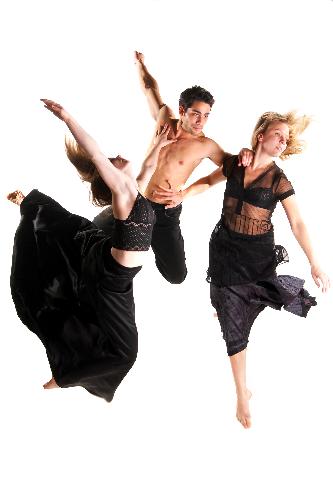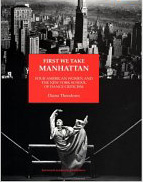Culturally Relevant? A Dance Critic Looks to the Territory Ahead
Dance writer Camille LeFevre looks beyond the demise of the salaried staff arts writing position to the challenges of freelancing in a culture in which concert dance, and newspapers, are often considered culturally irrelevant



USUALLY, I AM UNRUFFLED BY INCOMING NEWS of the steady demise of dance criticism (or even arts writing in general) as a profession worthy of respect, decent pay, and column inches. For years, it’s been evident to me that, for dance critics anyway, the era of full-time or even part-time positions at newspapers and magazines is over. In fact, I readily remind people who bemoan the lack of dance critic on the mastheada salaried position (sometimes even with benefits) that reached its heyday during the dance boom of the ’70s and ’80sto just shut up and get over it. Sure, Id love a staff position at a local newspaper, but heres the reality: In this economic and publishing climate, it aint gonna happen.
So it was no surprise when, several weeks ago, Deborah Jowitt was dismissed from the Village Voice after forty years as that publications dance critic. (Elizabeth Zimmer, who edited Jowitt and the dance page for decades, was released several years ago.) Yes, Jowitts job loss marks the end of an era. In their day, Jowitt and three other womenMarcia Siegel, Arlene Croce and Nancy Goldner (and arguably Jill Johnston, Sally Banes, Ann Daly, Joan Acocella)wrestled dance criticism away from music and theater writers and helped turn it into a profession with its own methodologies, figurehead practitioners, disagreements and points of view. For the nostalgic, the historians, and the new critics who wish to honor our foremothers and the profession they forged, Diana Theodores wrote an excellent book, First We Take Manhattan: Four American Women and the New York School of Dance Criticism, on those first four writers and criticism during what Theodores calls the Golden Age of Dance in New York from 1965-1985.
Jowitts dismissal is sad and unfortunate, of course. So is Lewis Segals: his position as dance critic at the L.A. Times has also been eliminated. Both of these critics, as well as those before them, contributed tremendously to our understanding and appreciation of ballet, modern, postmodern and non-western dance, with their intelligent writing and astute observations.
But really, Im more surprised that Jowitt and Seigels positions were retained for so long. Today, freelancing is the way of the journalistic world, and, reportedly, Jowitt and Segal have both been invited to freelance for their papers. Im sympathetic to their disappointment, as Im sure its demoralizing to be demoted to freelancer after enjoying a full-time position. But staff writing positions of all kinds are being scaled way back. Even movie criticsin New York and Los Angeles!are being laid off. With the dismal economic forecast for newspapers, were talking about changes that go beyond the cultural coverage these outlets have typically included. In addition to cuts among the ranks of staff arts writers, we’re also seeing a rapid disappearance of the kind of astute, nuanced, and knowledgeable political coverage from long-committed reporters that we’ve come to expect from our nation’s major dailiescoverage that’s arguably more critical to the need for accountability a democratic society.
As Eric Alterman recently wrote in The New Yorker : Few believe that newspapers in their current printed form will survive. Newspaper companies are losing advertisers, readers, market value, and, in some cases, their sense of mission at a pace that would have been barely imaginable just four years ago . Most managers in the industry have reacted to the collapse of their business model with a spiral of budget cuts, bureau closings, buyouts, layoffs, and reductions in page size and column inches. Since 1990, a quarter of all American newspaper jobs have disappeared.
So, fellow arts writers, lets get real and deal with the situation at hand. Those of us committed to writing about dance and/or practicing dance criticism (often two very different things) need to attend to a variety of often conflicting issues, such as: learning to advocate for dance with editors while maintaining a critical voice in writing; finding a balance between writing for print (which, with ever-shrinking word lengths, is like writing dance haiku) and writing for the web (for which we must learn restraint in the face of sometimes unlimited word lengthsthis article being an example of such unruliness, but also of the liberation web writing provides); and making sure you have other ways to support yourself, even as you spend an inordinate amount of time on dance writing and criticism. (For me, this is a conscious choice, by the wayso no complaints).
Heres an example of the cognitive dissonance that can occur between the old-school dance critic, who probably isnt writing much anymore, and the contemporary one who writes several times a week for various media. Last year, I had drinks with one of the grand dames of dance criticism. I remained in awe of her until I sought her advice about how to balance, with some semblance of critical integrity, the two most disparate aspects of dance writing for me: producing upbeat, enticing previews of work as yet unperformed, then a week later reviewing work that often didnt live up to the expectations of the preview. She insisted I only do one or the other. She had a point. Nonetheless, from a practical point of view, I was incredulous.
At least one of my editors considers me the go-to person for all things dance related. After fifteen years of writing about dance, Ive established enough street cred so that this editor feels confident enough to rely on me for accurate information, critical judgment, and cleanly written and timely articlesnot to mention making the occasional Do we cover this or not? call. I consider this role a huge responsibility, a serious undertaking with weekly effects in the dance community in which I serve.
If I were to, one afternoon, declare I was no longer writing previews, not only would my editor be angry, perhaps even apoplectic; such a declaration would be career suicide (note the quote marks). It would also be a disservice to the dance community, because, while of course Im replaceable (and well aware that Im writing on borrowed time), nearly all publications are currently working with skeleton crews. In all likelihood, if I were eliminate previews from my coverage, dance simply wouldnt get covered, or at least not as much, in the publications for which I regularly write.
Call me deluded or even Pollyanna-ish but, on a daily basis, Im immensely grateful for the dance-writing opportunities I have. I also appreciate whatever support and respect I receive from my harried editors. I’m a realist about what writing dance criticism entails these days, and I feel extremely fortunate that I have the outlets I do. And, of course, such opportunities wouldnt even exist without the incredibly diverse, vital, active, boundary-pushing and ever-evolving dance community here.
Actually, what really surprised me about Jowitts dismissal were the media reactions reflective of how under-the-radar concert dance remains. In a Gawker blog about Jowitts dismissal, one commentator was nonplussed because, they wrote, dance is increasingly irrelevant, culturally. Huh? What planet does this person live on? Have they watched television lately, with its plethora of dance-reality programming? Do they tune into YouTube, awash with dance videos, not only of professional companies and dancers, but from everyday people? Has this naysayer never danced at a club, a party, a family gathering?
Ah, its art dance, concert dance–the stuff dance critics write about–thats culturally irrelevant, it seems. Well, I must beg to differ. Last month, Stuart Pimslers new work Ways to Be Hold cloaked human indifference to atrocity in the metaphor of warm, comfy overcoats. Non-didactic and profoundly moving, the dance-theater piece conveyed its spiritual warning through the juxtaposition of this metaphor, embodied in the presence and incantatory words of spoken-word artist Tiyo Siyolo, with a flotilla of dancers wrestling in and out of each others grasp. I challenge anyone to convince me that this work isnt culturally relevant.
Or, lets see, how about Dan Shapiro and Joanie Smiths 1996 What Dark/Falling Into Light, performed by Shapiro and Smith Dance last weekend? This is truly a timeless work, inspired by the Holocaust but equally harrowing to experience against the backdrop of more current genocide, whether in Eastern Europe or Africa. Yes, its rigorously abstract, with moments of seemingly gravity-defying, bone-crunching, muscle-twisting physicality that leaves one utterly shaken. Its an intensely intimate, bravely performed work on the part of the dancers, who spend the second half nearly naked in a painful representation of stripped and broken humanity.
Let’s not forget the humor, wit, revelations, and breathtaking moments of invincible, terrifying beauty concert dance can give us. For me, all of these moments, these fleeting memories, are the talismans that make dance watching and writing, in an age long-passed the Golden one, worth pursuing. The real challenge for dance in the 21st century isnt so much the lack of salaried or staff positions for dance critics. Its the ongoing need for audience outreach and education about danceespecially concert danceas an integral, relevant, aesthetically necessary, rock-your-world part of everyday life.
About the writer: Camille LeFevre is a Twin Cities dance critic.